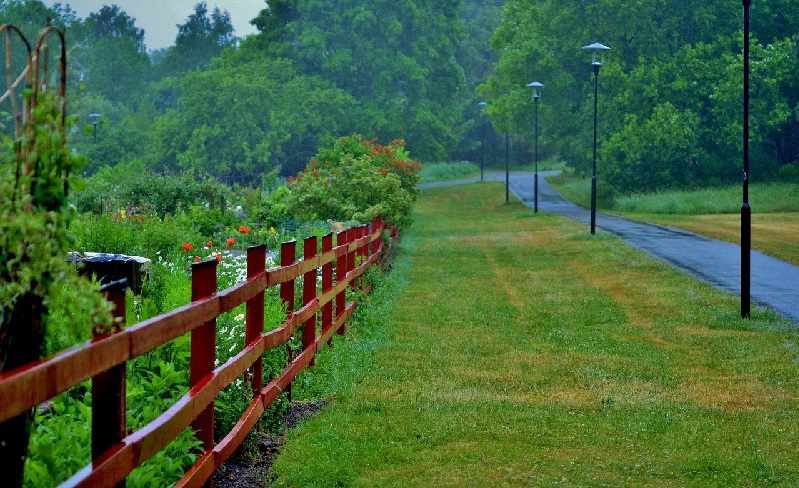Fences are used in multiple settings for a wide range of purposes. Residential and commercial reasons are privacy, security, and containment for pets or young children. A use specific to commercial entities is to protect research and development projects. Uses in farm and rural settings include indicating property lines, making corrals, keeping the wildlife away from crops or chickens and creating pens for pigs.
Which Material
The primary question regarding fencing centers around the type of material to select. Common materials consist of wood, vinyl, PVC, aluminum and steel tubing. The answer lies in the wants and needs of the buyer. Those seeking an all-natural look may wish to choose wood even knowing the material requires high maintenance.
Vinyl and PVC require little maintenance but will not be as sturdy as metal fencing. Steel is structurally sound and will last indefinitely. It is also easy to weld together and available in several pre-cut sizes. Contractors in need of steel fence posts can get help at varnerpipe.com. Steel tubing is delivered directly to project sites to save time.
How to Best Anchor Posts
Fencing with the wrong backfill or improperly installed will become wobbly, especially in storms or high wind areas. Most materials must be anchored in concrete to remain sturdy. The concrete sets in the ground so moving the posts, or replacing them, is an arduous and expensive endeavor.
Steel can be anchored with concrete but is more commonly anchored with crushed gravel or soil. The robust posts stay secured in the ground with any type of backfill. This makes steel fencing more flexible in terms of re-configuring dimensions and moving the posts.
Return on Investment (ROI)
Before having a fence installed, people want to know if the cost will provide a high return on the investment. Looking at initial pricing does not translate into the best choice for the money spent. A cheap fence is not cost-effective because it will need to be replaced within 5 to 7 years. Steel costs a bit more to purchase and have installed but is more durable and adds curb appeal to the property.
The ROI is calculated based on how the fence will stand up to elements, wear and tear and time. The metal used has been finished and is not susceptible to rust for 15 to 20 years. The durability, high level of security and low maintenance provides a major return on the investment.
Design
When people think of fences made of metal, the boring chain link style, rickety gates and a cold and stark appearance come to mind. This cannot be farther from the truth with modern designs ranging from simple too intricate and stunning. Steel can resemble classic wrought iron, have flowers or symbols carved out as part of the design or take creative shapes along the fence. A business name or logo captures the attention when seen in steel fencing.
Added Weight
Posts with lanterns, decorations or small plant boxes must be able to handle the extra weight without weakening or buckling. A wood post, for example, can be compromised and not visually apparent. A crack can develop in the center or a splinter begins along the natural grain. Metal posts will handle the weight and not sacrifice integrity.
There are many questions that must be answered when considering a fence. Cost, durability, design, ROI and materials are just the beginning but will get you started in the right direction.
Note:
Homeinside.net is providing an opportunity to provide guest posts on its platform. If you have good writing skills or want to contribute on some good topics like Write for us Home Decor, Home Improvement, Home Renovation Ideas, House Designs Plans, Kitchen, Home Office, Remodeling, Bathroom, Plumbing, Interior Design, Architecture, Real Estate, Bedroom, Solar, Furniture, Maintenance, Walls, DIY, gardening then you are on the right side.
Home Improvement Guest Post Blog
